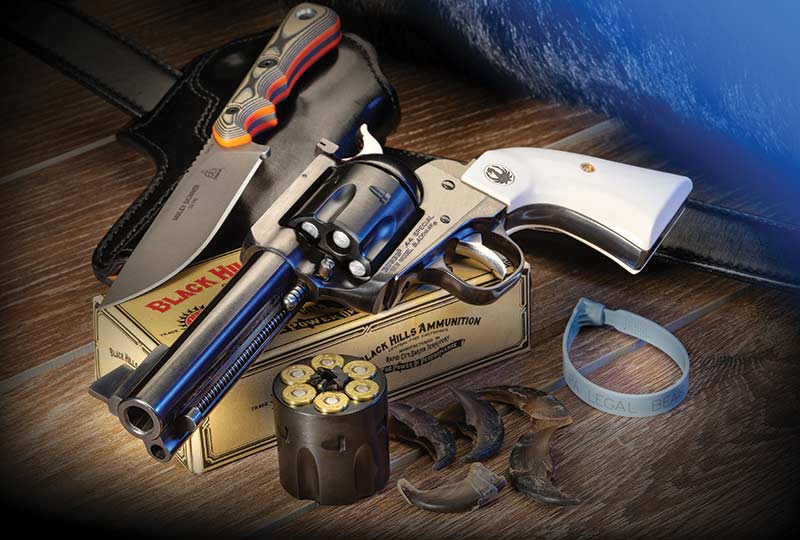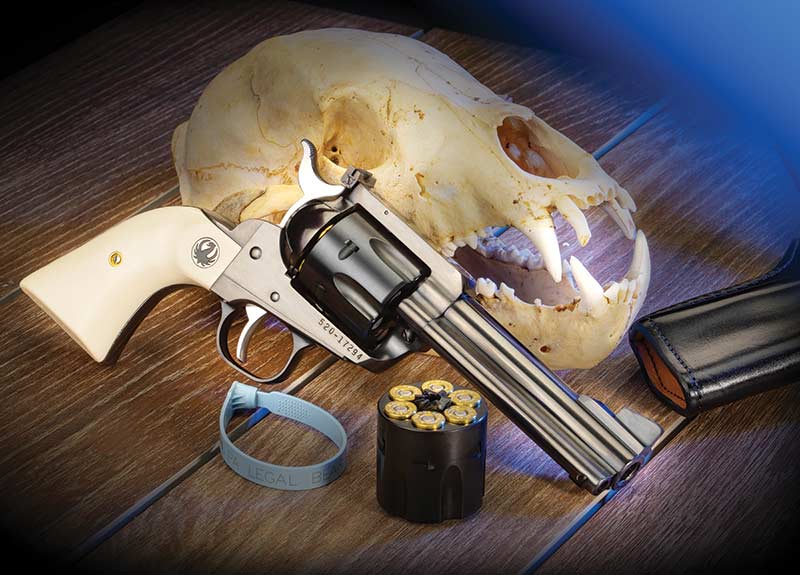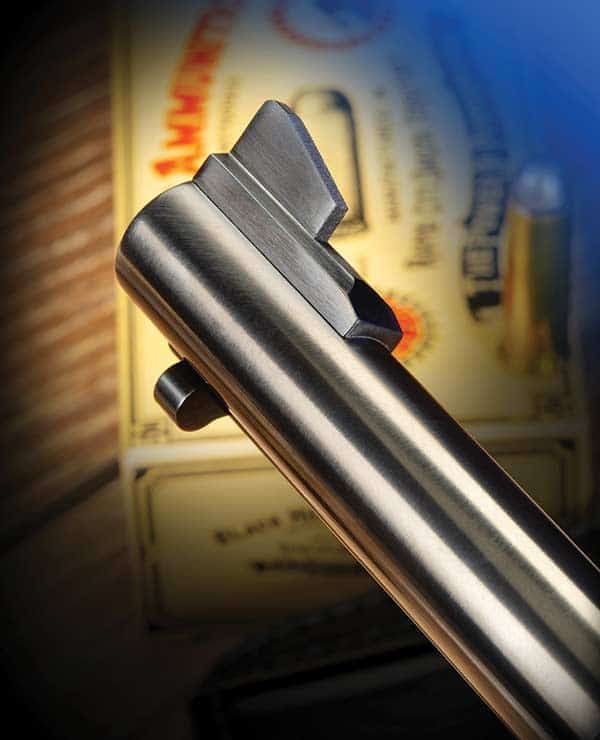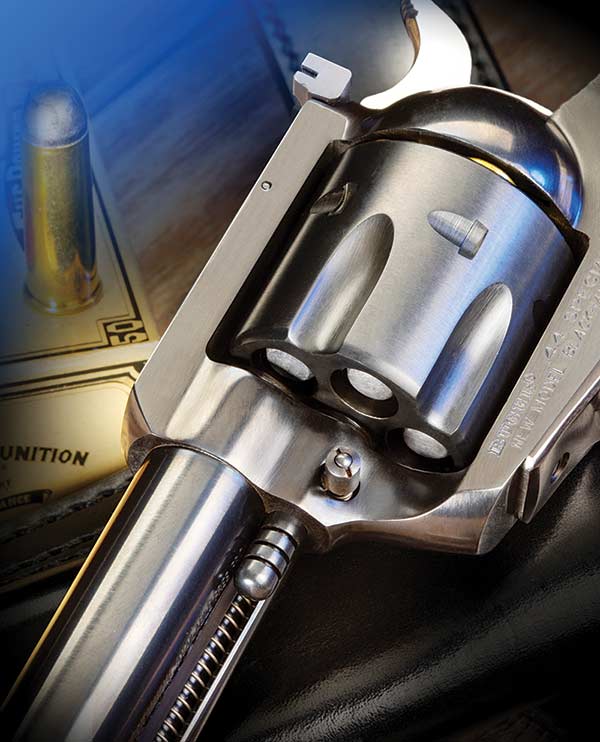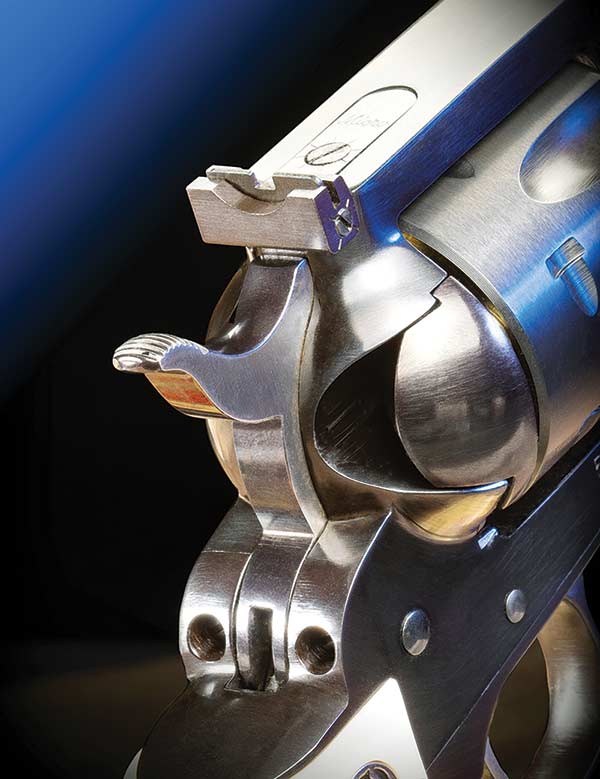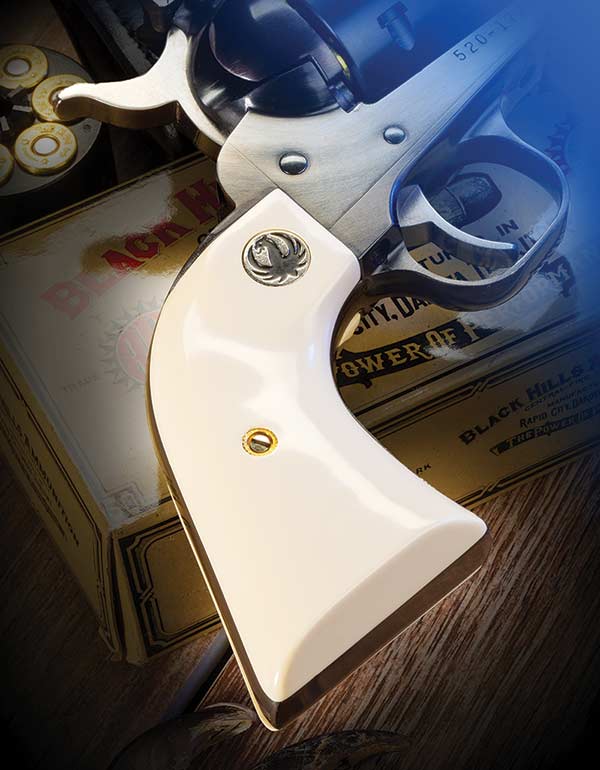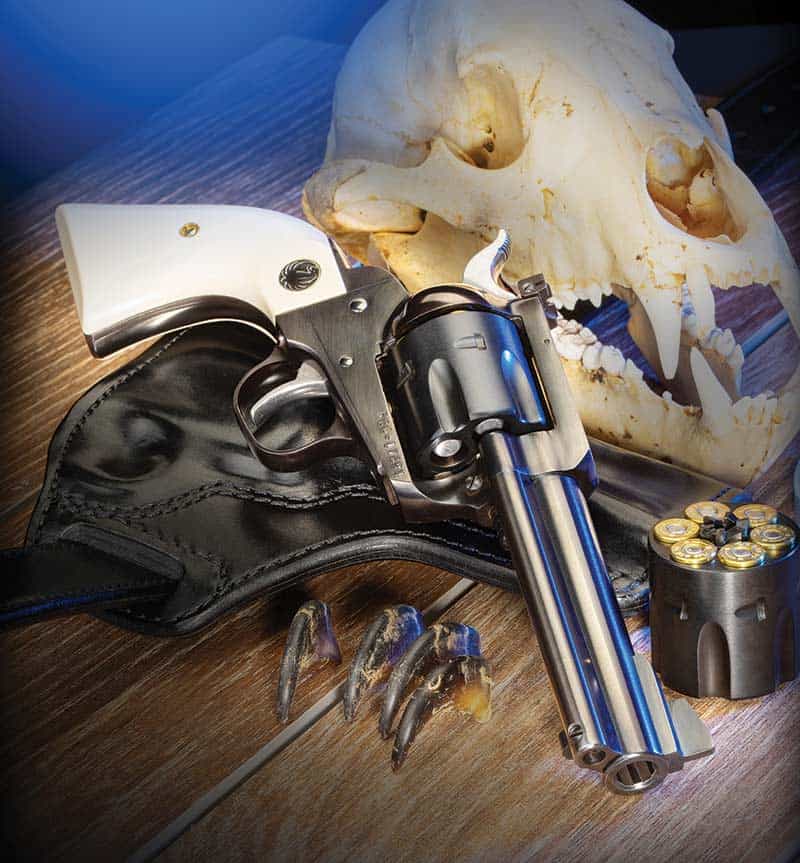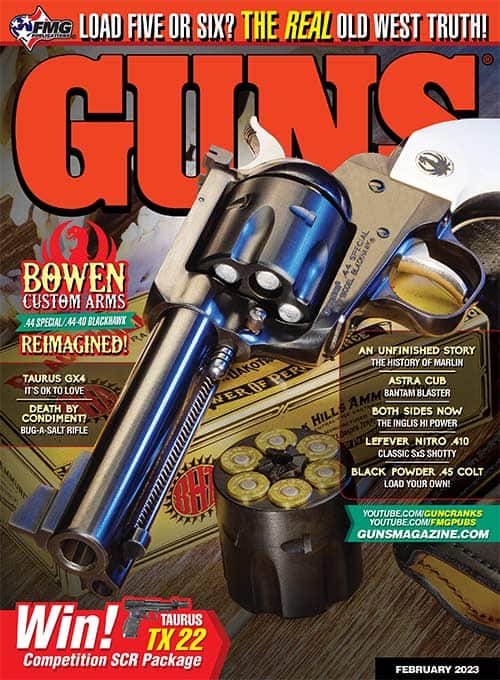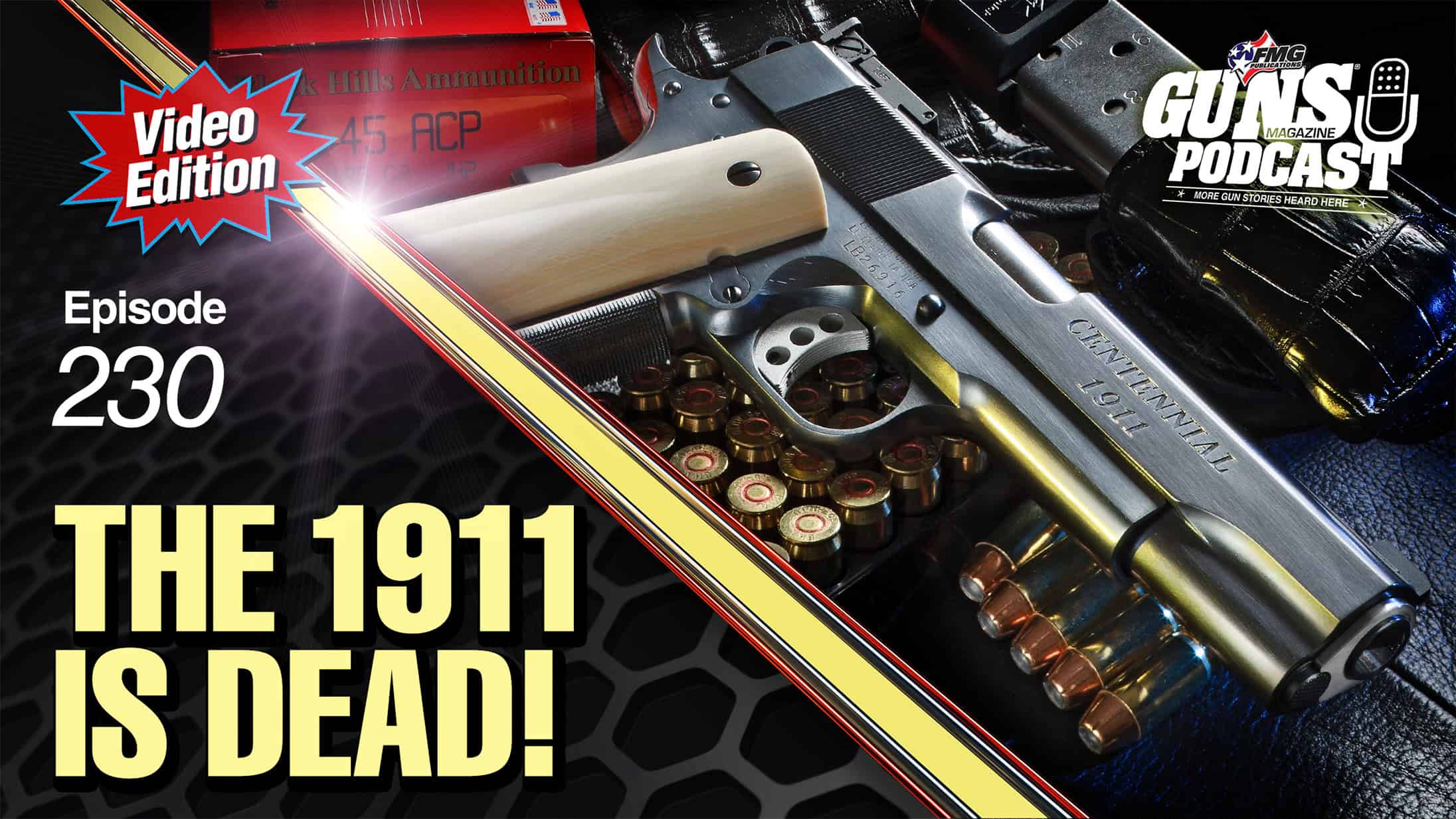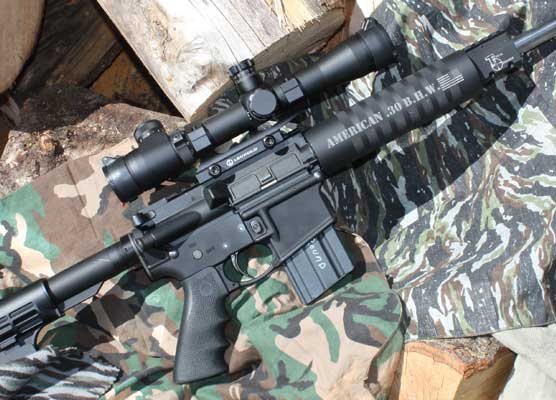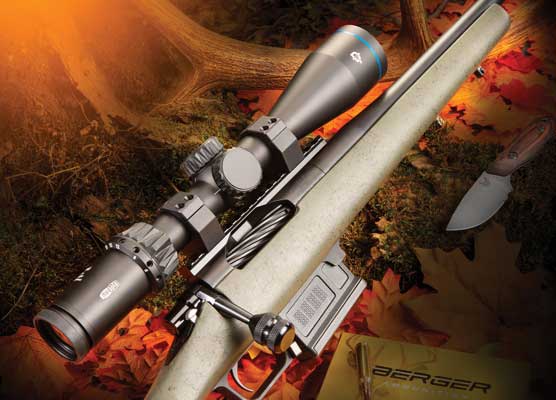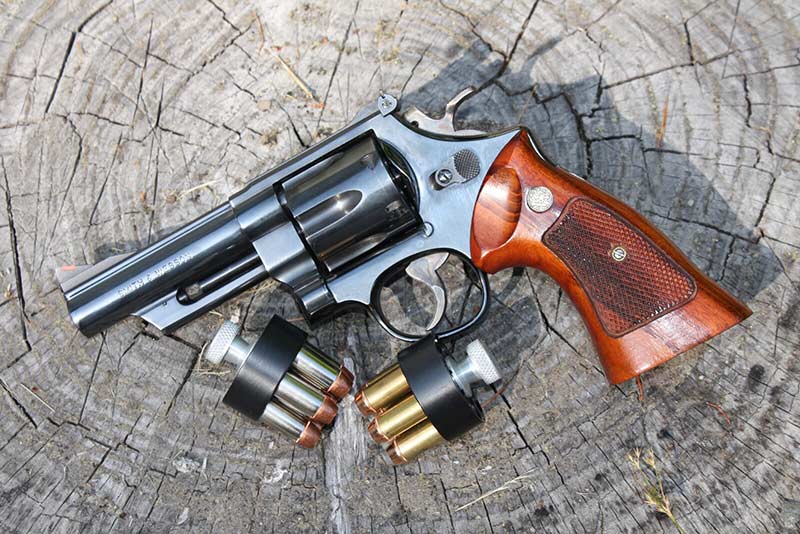Bowen Classic Arms
A Cheeky .44 Special/ .44-40 Combo
Hamilton Bowen is a cherished friend, a benchmark leader in custom revolver building, witty, and — dare I say it — even charming at times. The fact is before gun making, he completed undergraduate studies in history and English, likely helping to account for his literary ease. Hamilton’s emails always delight and his grasp of what makes us smile when it comes to revolvers is indeed legendary.
Hamilton studied gun making at Trinidad State Junior College, finding himself drawn particularly to revolvers. After graduation, he returned to his native Tennessee to focus on his real passion, revolver work. After 1980, Bowen Classic Arms was born or, as Hamilton says, he “… at least entered his apprenticeship to himself.”
A few months ago, I sent what began life as a standard Ruger New Model Blackhawk in .44 Special to Hamilton for a bit of work. I got the following email from him after a suitable period of time had passed.
“Expect to blue in another couple of weeks and we should have you ready to go. Assuming some version of Bowen’s Disease (it’s whatever it needs to be, depending upon the situation) doesn’t intrude. Just for the record, the formal literary name for such excuses (in principle) is ‘Bunburying,’ from Oscar Wilde’s The Importance of Being Earnest although Oscar used the name of an imaginary friend rather than an imaginary disease in his immortal play.”
As might be expected, someone who would write an update like this to a client can likely be relied upon to think outside the box when it comes to custom revolver work. You’d be correct if you thought as much.
The Bowen Signature
During his tenure at Trinidad, gunsmithing schools focused on rifle building and sporting shotgun work. After starting Bowen Classic Arms, Hamilton devoted time to perfecting his craft. According to his website:
“… Hamilton devoted several more years to study and experimentation, developing the designs, procedures, parts and tooling for the sophisticated revolver-making that constitute the core offerings of the firm to this day.”
The cylinders Hamilton developed, “… in particular, ranging from the simple factory style replacement components for Ruger 6-shot and Colt SA revolvers, to the 5-shot line-bored Ruger and the more complex 5-shot Redhawk DA parts, are often at the heart of a great custom revolver.”
Dissatisfied with what was out there, Hamilton continued to develop specialty parts like his famous cylinder base pins, custom front and rear sights and much more. Like any quality product, what goes into the build affects the result, so the first-class parts Hamilton’s shop produces help to assure the final builds are what he expects and what customers have come to appreciate.
Some parts-making is outsourced to CNC shops, while other specialty tasks requiring EDM, tool grinding, etc. are also sent out to help expedite delivery. Yet, it all comes together in the Bowen shop using conventional machinery like horizontal and vertical mills, lathes, surface and cylindrical grinders, a jig-borer, welders, a heat-treat furnace and a honing machine. There is the usual array of belt and bench grinders, a bead blast cabinet, a bluing set-up and the associated cross-section of hand tools, fixtures, reamers, abrasives and such.
But as Hamilton told me some years ago, “I can honestly say I’m happiest in the shop with a file in my hand.” That may distill the process down to the core. Files, 600-grit wet-or-dry paper, a sharp eye and decades of experience are still the foundation of every custom revolver from Hamilton’s shop. It always is, and always will be, the handwork doing the real magic.
Our Project
Actually, it’s a very modest one. Starting with a base Ruger model — in my case a stock New Model Blackhawk with 4.6″ barrel in .44 Special, created in a limited run a few years ago. I grabbed it when I saw it, thinking it’d make a great base gun for a build some day. I’m glad I did. I swapped the black plastic grips for a set of Ruger synthetic white grips, which I think is a not-so-obvious to-do change. White grips on a black gun can often make the difference between invisibility — and presence.
As it came, the gun was serviceable but typical Ruger in the sense the trigger could have been a bit better, while accuracy was reliable but predictable, in the 2″ to 2.5″ range at 25 yards with the .44 Special chambering. This is perfectly adequate — and better than many revolver owners can even shoot — but part of the delight of a custom gun is chasing accuracy.
Forthwith, I stumbled onto what could only be called a great deal on a few cases of .44-40 cowboy ammo but alas, had nothing to shoot it through. It was one of those “buy the ammo and think about a gun for it later” situations. I called Hamilton and explained my situation.
“Do you have a .44 Ruger single-action?” says he.
Why yes, as a matter of fact, I did.
“Good, send it along and we’ll drum-up a .44-40 cylinder for it, then tidy things up for you.”
What a grand idea, so off it went.
Time Passes
I’ve been blessed to own several Bowen guns, so in anticipation, did the obligatory pins and needles torment waiting for this one. To make things even more vexing, when I got the gun I had to bounce it to our guru of picture-taking, Rob Jones, before I could shoot it.
“Musn’t fuss with the finish before I take the pictures, you know,” Rob said.
I could tell he was smiling, even over the phone.
But I did cheat a tad and found the action much smoother than before and the addition of the Bowen oversized base pin and Rough Country rear sight had changed the character of the sixgun for sure. I did some dry firing and the combination of better sights and smooth action made the work worthwhile alone, not even counting the addition of the .44-40 cylinder.
In a note to me, Hamilton said, “Tell the troops we did our basic tune/sight/base-pin package, checked and re-cut the forcing cone as needed and did you up with a .44-40 cylinder, all nicely set up to fit your gun as such things should be.”
Owing to a conflict in chamber specs in the Blackhawk, the new cylinder is made from a re-chambered .357 cylinder.
Says Hamilton: “We set back the barrel to match the new cylinder and test-fired things. As you know, Ruger makes larger-caliber cylinder bodies slightly longer then their smaller-bore brethren to keep .44s and .45s out of .357 guns. Be easy to mix up parts and put a .44 or .45 cylinder behind a .357 barrel if cylinder bodies were the same across all calibers.”
Well, I didn’t know that, had never even thought of it, and can only imagine what it would be like to fire a .44 Magnum in a gun chambered for .357. Oopsie, indeed.
The basic tune/action sight work runs about $495 and is a screaming deal if you ask me. The addition of the extra cylinder adds to the cost, of course. Since each project is different, Bowen’s shop can quote what it would cost for your particular package if it moves beyond the basics.
Shooting
It all comes down to what occurs on the range. The stock groups showed me what the gun did before it was sent off. Once returned, using Black Hills .44 Special and .44-40 cowboy loads, I ran the Blackhawk through its paces again.
With either cylinder, I’d call this “new” gun a solid 1.25″ gun at 25 yards, at least with my failing eyesight. Using my Eyepal USA sight patch on my shooting glasses sharpens the iron sights, and that’s when the Rough Country bold rear really helps matters. If anything, I’d say the .44-40 cylinder might have a slight edge over the .44 Special, but I need to try some other Special loads before I declare who wins that battle.
I keep a steel silhouette target here about 80 yards from my shooting bench. I had painted it freshly and after targeting on paper, took careful aim with the .44-40 cowboy load and centered the steel with a high chest hold. Taking a bit more elevation, I was able to land several consecutive shots on the 6″x6″ head portion of the target.
I confess, watching the group of lead splashes appear almost by magic, was both confidence building and simply marvelous to behold. While the stock gun would have been able to hit the torso, I’d have been hard pressed to plant a group on the head. Is the $496 worth it? You be the judge.
With the shorter barrel I’d call this a great trail gun, also perfect for horseback, cross-drawing in a flap holster, on your chest in a Diamond-D rig, or in the Jeep or tractor. Hunting modest whitetail deer is well within the ability of this gun and the enhanced accuracy due to the forcing cone work, sights and action attention makes this a 100-yard gun in the right hands.
How satisfying this sort of thing can be.
Final Thoughts
Hamilton is a member of the American Pistolsmiths Guild (a past president even) and is a member of the American Custom Gunmakers Guild. An NRA member, Hamilton is a regular guest instructor with the NRA Summer Schools program, lecturing at Trinidad State Jr. College and Montgomery State Jr. College in Try, NC. I’ve always admired the fact Hamilton likes to spread the word, sharing what he’s learned with up-and-coming gunmakers.
Located in the “Shadow of the Great Smoky Mountains” as Hamilton says, Bowen Classic Arms has built a well-deserved history setting high standards for custom revolver work. To say their work is a benchmark by which others are judged is to sorely understate things.
To light a fire urging you to build your own dream gun, I recommend going to Hamilton’s website to buy the Kindle edition of his ground-breaking book, The Custom Revolver. It’s engaging, entertaining, chock-full of irresistible photos of guns, gear, shop work and of dream projects the Bowen shop has made reality. The color plates are worth the price of entry alone. If it doesn’t enthuse you, your heart is encased in ice and you have no soul.
Trust me on that.
